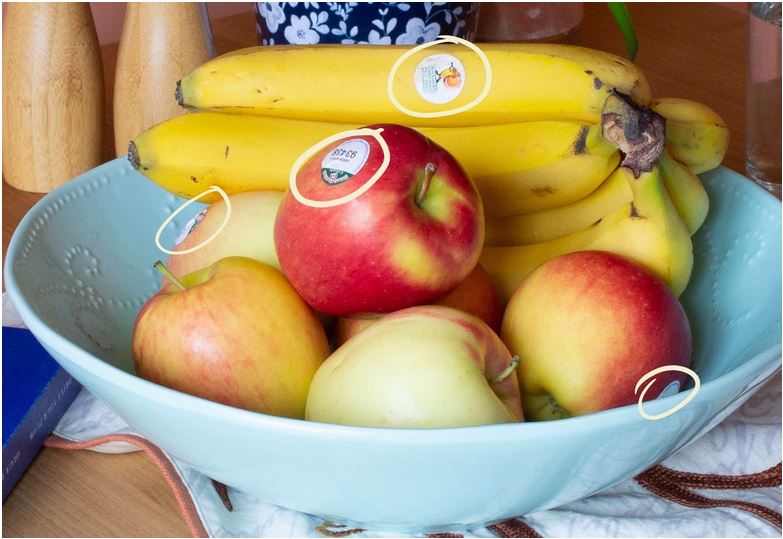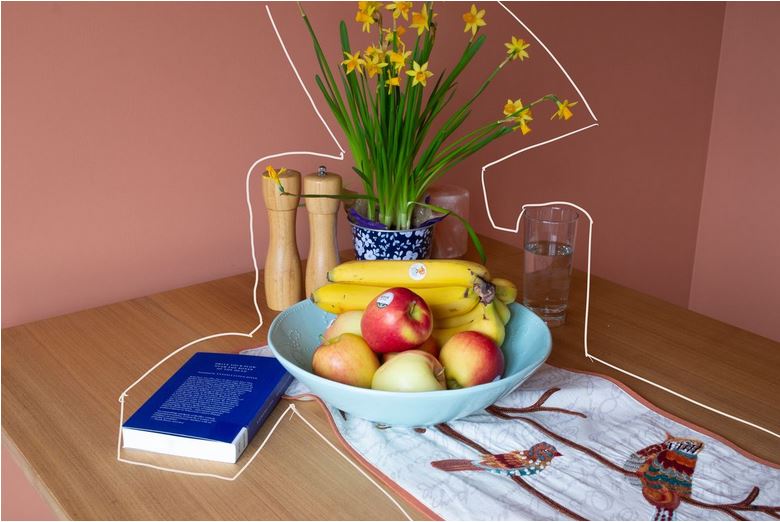These simple exercises will introduce you to this unique way of looking at the world.
Visual artists inhabit the same world as everyone else, but they experience it quite differently. A painter might be enthralled by the color of a shadow cast by one building onto another, or marvel at the intricate chevron shapes of a dandelion’s leaf. To the trained eyes of an artist, these seemingly mundane sights might be as compelling as a cascading waterfall or a majestic mountain peak. Importantly, they all hold the potential to inspire future creations; the chevron shapes might find a place in an abstract painting, for example, while the shadow’s colors could appear as rich, dark layers of paint. Artists view the world as raw material that can figure into works of art, and they may notice things that others overlook. Yet, seeing like an artist is a skill that anyone can develop.
Look at your surroundings with the curiosity of a child
If you were asked to name the components of the above photo, flowers, apples, and bananas would likely be at the top of your list. This is because identifying and naming the things we know satisfies our desire to make sense of our surroundings. When observing a scene or image, we tend to glance, label, and move our eyes from one object to the next.
When we see a thing that we can’t identify, however, we look at it in an entirely different way. We study its color, shape, texture, and size with the same curiosity we had as children, when we discovered many objects for the first time. This is how many artists strive to see—to avoid the labelling that stands in the way of deeper perception.
Now, look at the photo again and try describing the objects without using their names.
Zoom in on color variations
Do you notice other examples of color repetition in this composition?
Now, make one of your hands into a loose fist and look at segments of the objects through the hole between your fingers and palm. Isolating a single color from its surroundings makes it easier to see and, if you’re painting, to mix it on your palette.
Along with variations in color, look for variations in shape. Among the round objects, you’ll find that some appear oblong with blunted ends, while others are curvier or have protruding linear elements. Take note of the shapes that make each object unique.
Squint and join objects together
Next, change your focus and squint hard at the entire picture. Squinting minimizes color, detail, and distinctions between objects, allowing a complex scene to become a simple composition of shape and color. In practice, this helps a painter, for example, figure out how to depict a forest filled with trees, without painting every single tree. Instead, they can paint a single mass to suggest many individual things.
In this case, squinting reveals that the round objects come together to form a triangular shape of reds, oranges, and yellows. Long, yellow objects combine into a horizontal block behind the triangle, and hovering above these is an airy arch of small, pointy, yellow and orange shapes atop a fan of green. Some of the pointy shapes can be joined with a squint, while others remain firmly separate.
You may decide that the two columnar shapes can be viewed as one mass with a dark shape in the middle. An artist who saw them in this way would render them with a different approach than one who saw them as two shapes placed close together.
Look for the negative space
The space around things is just as important to artists as the things themselves; they study this “negative space” with great attention. Varying the size and shape of negative spaces can bring interest to a relatively homogenous area of a painting; adding such space can create balance or tension, or change the feeling that an artwork conveys.
In this photo, the setup has been altered to create larger negative spaces in the bowl and between the cylinders. Take note of how this affects your perception of the composition. Whereas the tight, overlapping objects in the original set up conveyed abundance, by introducing negative space, it makes it appear subtly formal and austere.
Study the effects of angles and lines
In the original photo, the book’s steep angle leads our eyes swiftly up from the bottom of the frame to the rim of the bowl and from there, to the shaker. This makes us look up and across the curve of the flowers. Finally, our eyes move downward, following the line of the bananas into the bowl. It’s a satisfying visual journey in which each angle and line leads naturally to another, and no important object is omitted.
Examine the effect of changing an angle (the book) and adding a curved line (the banana). Now, our eyes enter from the left and come to an abrupt stop against the bowl. After a pause our eyes traverse the rim and travel an oval path created by banana, leaves, and shaker. We end at the bowl, having skipped over the flowers entirely. Our viewing experience has been transformed.
This photo was useful, but contains a fraction of the color, and none of the dimension of real objects. If you practice these exercises often and from life, your perception will become increasingly subtle. You’ll begin to see the world with artist’s eyes and it will reveal beauty, interest and variety everywhere you look.
(Author: Ingrid Christensen)
(Source: artsy.net)
















